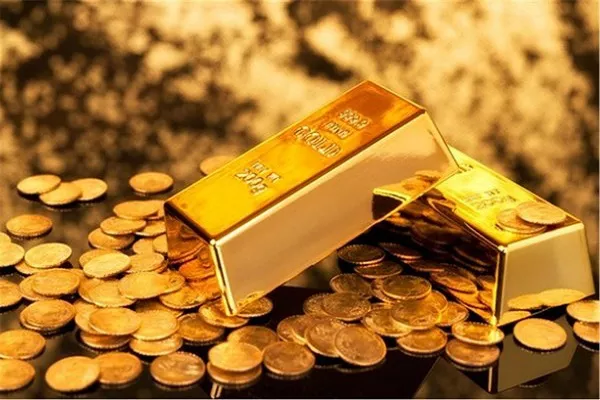The Sacagawea dollar, often referred to as the “golden dollar,” is a distinctive piece of U.S. currency that has captured the interest of collectors and the general public alike since its introduction. While its golden hue has led many to believe it contains real gold, the truth about its composition is more complex. This article delves into the history, design, composition, and public perception of the Sacagawea dollar, clarifying misconceptions and highlighting its significance in American numismatics.
Historical Context
The Sacagawea dollar was first minted in 2000, following the less-than-successful Susan B. Anthony dollar which was often confused with the quarter due to its similar size and color. The United States Mint sought to create a coin that would stand out both visually and culturally. They chose Sacagawea, the Shoshone woman who played a crucial role as a guide and interpreter for the Lewis and Clark Expedition, to be the face of the new dollar coin.
Design and Symbolism
The design of the Sacagawea dollar was a result of a collaborative effort to honor Native American heritage and highlight an important historical figure. Glenna Goodacre, an accomplished sculptor, was selected to create the obverse design, which features a portrait of Sacagawea carrying her infant son, Jean Baptiste. The reverse side, designed by Thomas D. Rogers, Sr., initially depicted a soaring eagle surrounded by 17 stars, symbolizing the states at the time of the Lewis and Clark expedition.
The choice of Sacagawea as the coin’s figurehead was significant. It represented an acknowledgment of the contributions of Native Americans to U.S. history, a departure from the usual male and predominantly European faces on U.S. currency. This decision was met with both praise and criticism, reflecting broader conversations about representation and historical memory.
Composition: The Gold Confusion
The Sacagawea dollar is often mistaken for a gold coin due to its golden color. However, it does not contain any gold. The coin’s composition is primarily a blend of copper, zinc, manganese, and nickel. Specifically, it consists of a core of pure copper, which makes up 88.5% of the coin’s weight, surrounded by a cladding of manganese-brass alloy. This cladding is composed of 77% copper, 12% zinc, 7% manganese, and 4% nickel.
This combination of metals gives the Sacagawea dollar its distinctive golden hue, a deliberate choice by the U.S. Mint to ensure the coin could be easily differentiated from other denominations. Despite its appearance, the coin’s actual value in terms of metal content is significantly less than one dollar, with its intrinsic material worth being only a small fraction of its face value.
Public Perception and Misconceptions
The visual appeal of the Sacagawea dollar led many to believe it contained real gold. This misconception was further fueled by marketing strategies and misrepresentations in various media. Some private sellers and collectors might describe the coin as “golden” or even imply a higher intrinsic value than it truly possesses. However, the U.S. Mint has always been clear about the coin’s composition, providing detailed information about the metals used in its production.
Despite the initial excitement, the Sacagawea dollar did not achieve widespread circulation. Factors contributing to this included public preference for paper currency and the lack of vending machines and other coin-operated devices that accepted the new dollar. The coin found more success in specific niches, such as in collectors’ circles and among certain businesses and transit systems.
Numismatic Value
For collectors, the Sacagawea dollar holds value beyond its face worth. Various factors contribute to its numismatic value, including mint year, condition, and any unique characteristics such as errors or special editions. Proof sets, uncirculated coins, and coins from limited production runs are particularly sought after. For example, the 2000-P “Wounded Eagle” variety, which features a die gouge across the eagle’s breast, is highly valued by collectors.
Moreover, from 2009 onwards, the reverse design of the Sacagawea dollar changed annually to honor Native American contributions to U.S. history. These varying designs have increased interest and value for numismatists who seek to complete their collections.
The Future of the Sacagawea Dollar
The future of the Sacagawea dollar remains uncertain in terms of general circulation. While it continues to be produced and used in certain sectors, its overall presence in everyday transactions is minimal. However, its role in the numismatic community is secure, with collectors continually seeking out both circulated and special edition coins.
The coin’s legacy extends beyond its physical presence. It serves as a reminder of the importance of representation and the acknowledgment of diverse contributions to American history. The Sacagawea dollar symbolizes a step toward inclusivity in U.S. currency, reflecting broader societal shifts.
See Also What is the Best Gold to Buy and Hold?
Conclusion
The Sacagawea dollar, despite its golden appearance, does not contain real gold. Its true value lies in its symbolic significance and its role in numismatics. Understanding the coin’s composition, history, and the misconceptions surrounding it provides a clearer picture of its place in the pantheon of U.S. currency. As a collector’s item and a piece of cultural representation, the Sacagawea dollar continues to captivate and educate, reminding us of the rich tapestry of American history and the diverse figures who have shaped it.


